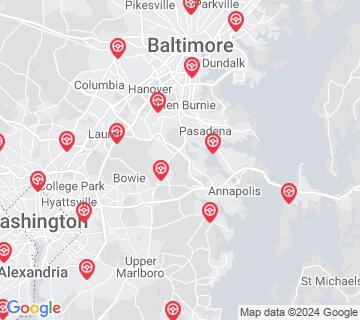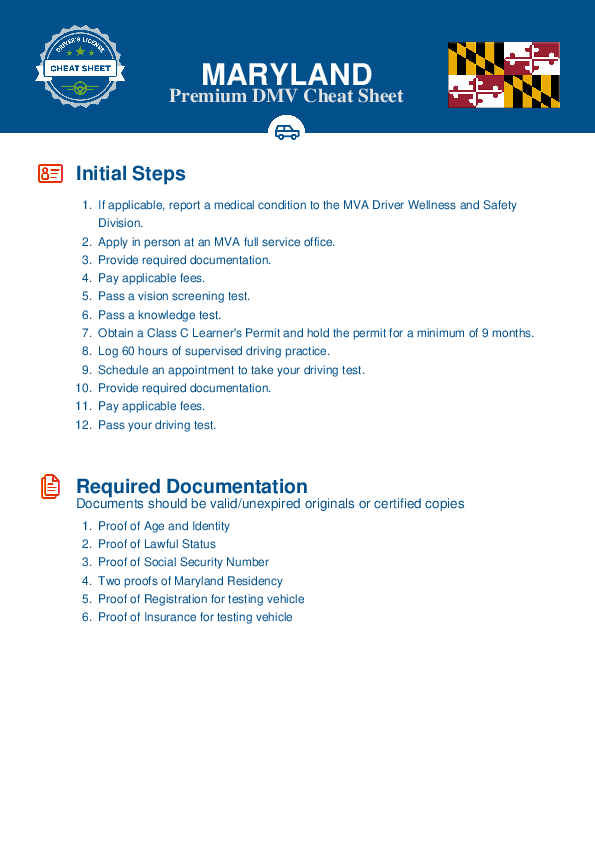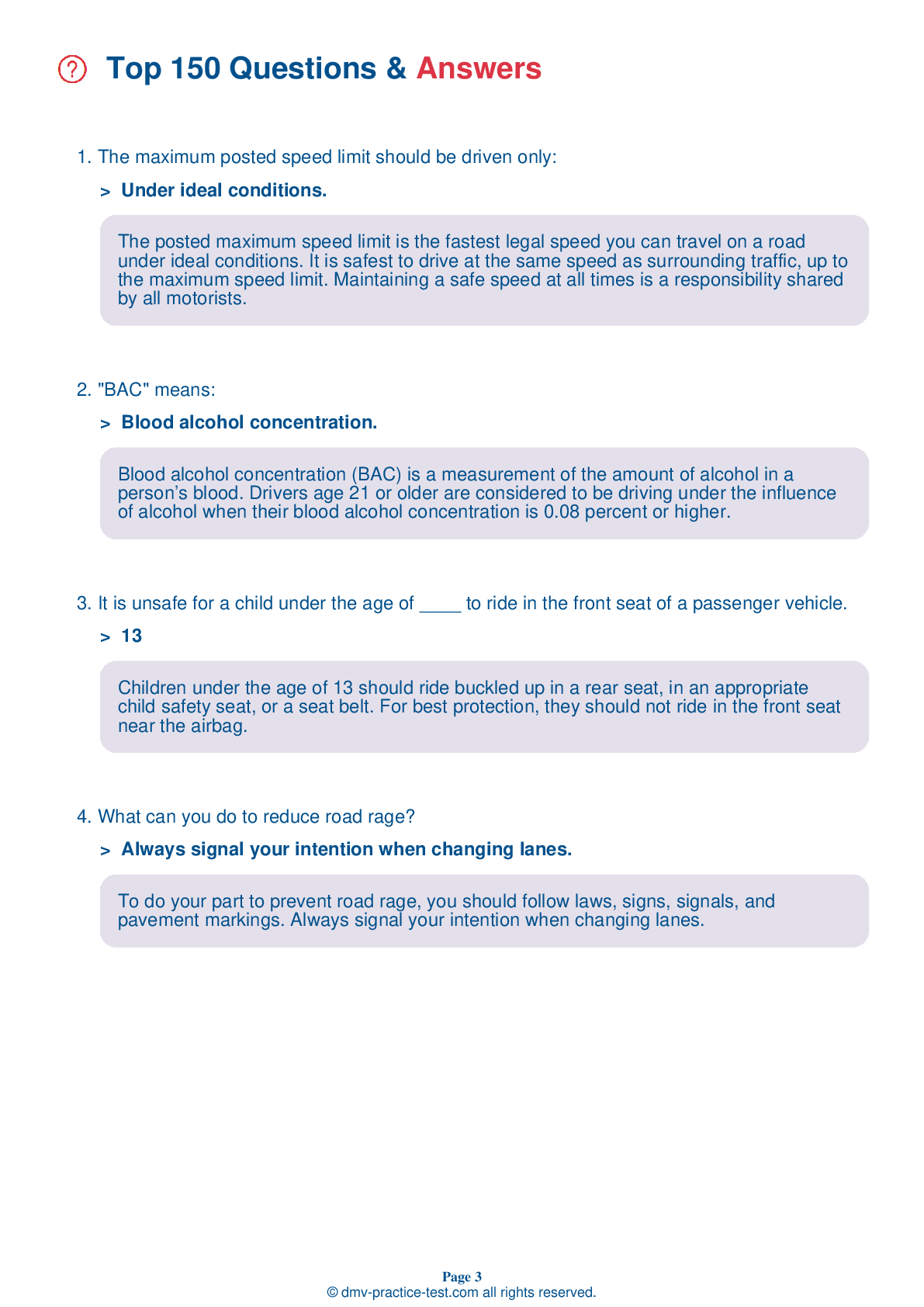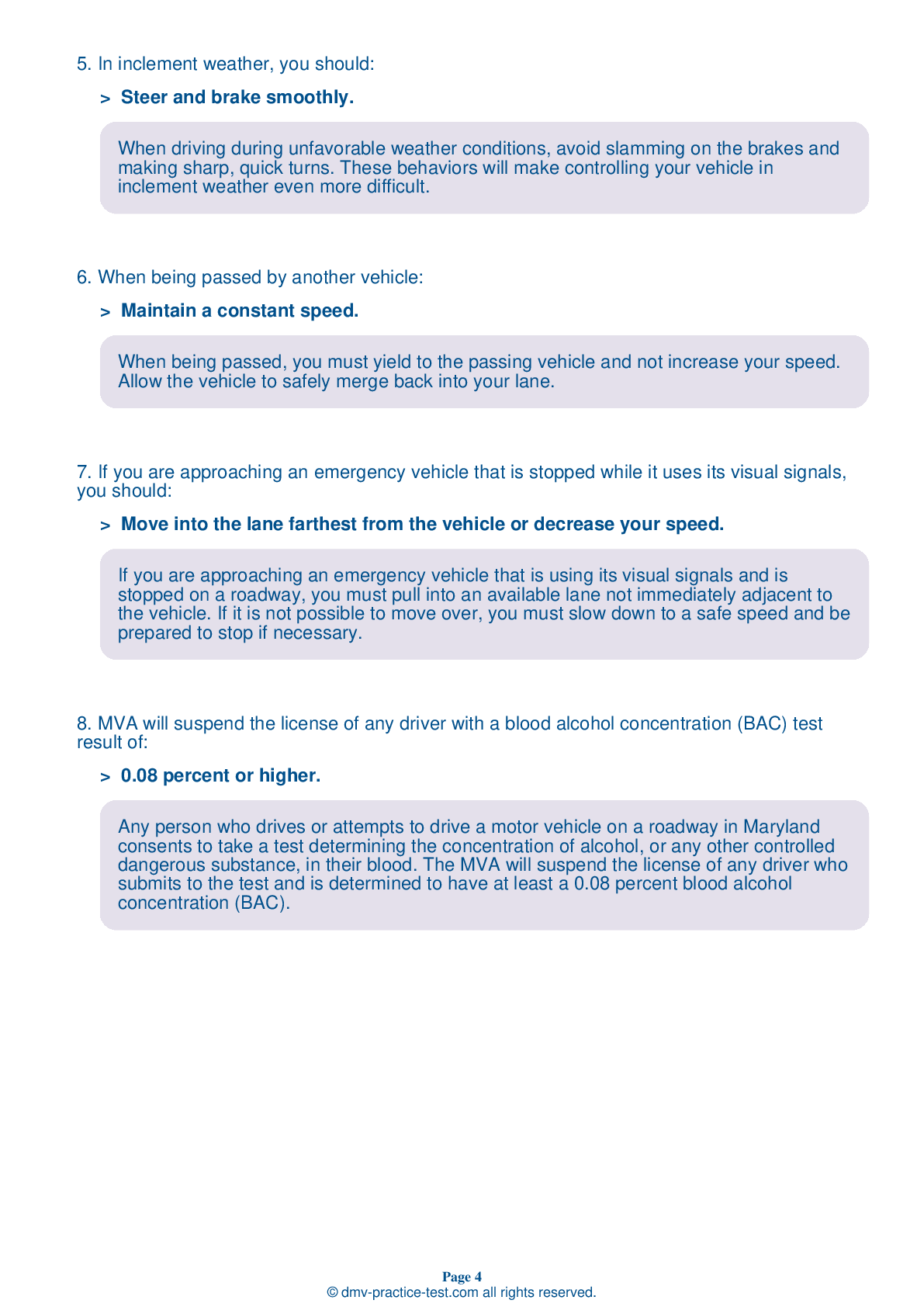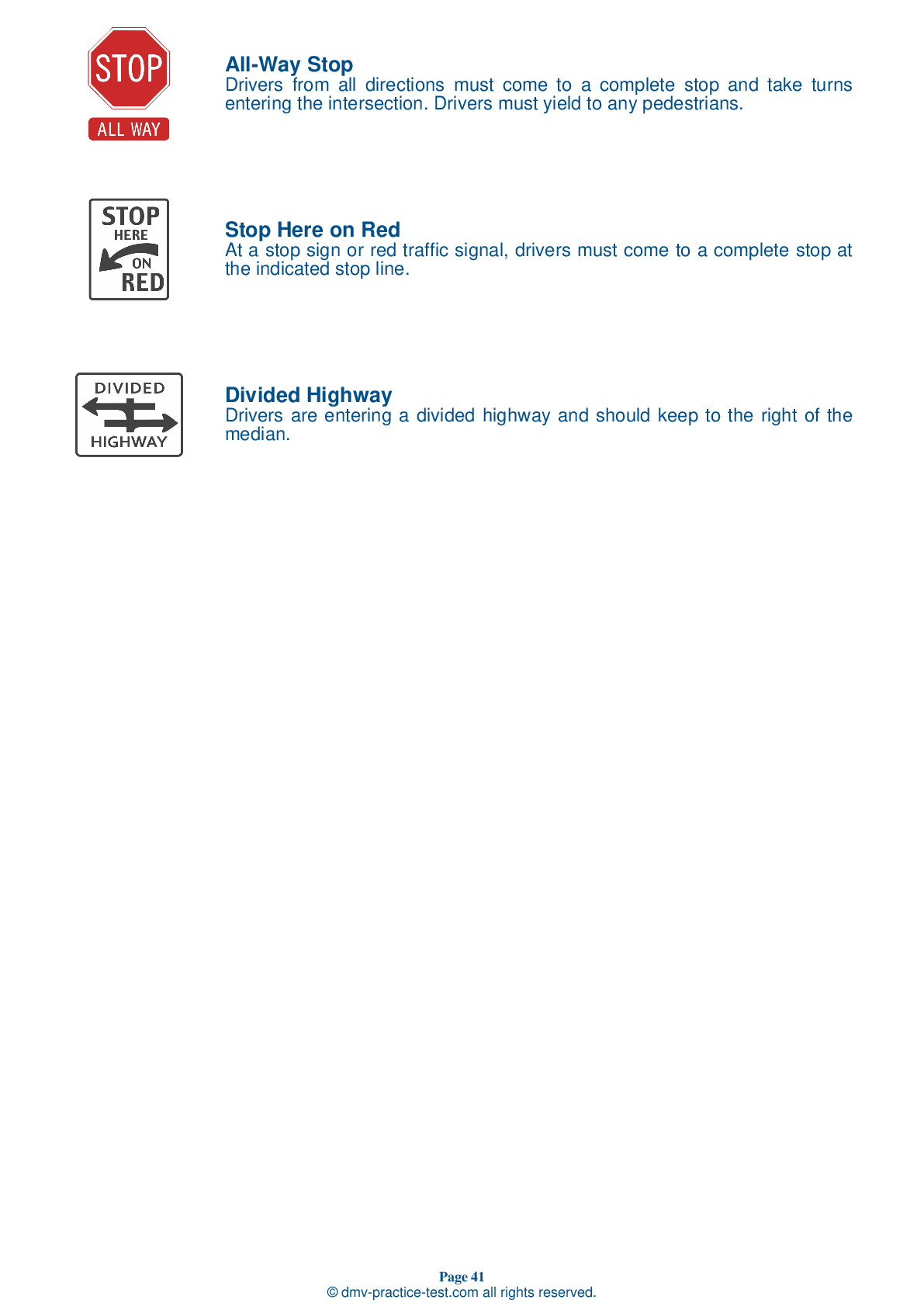FREE Maryland DMV Practice Test #20
Maryland DMV practise examinations have been updated for January 2025. It includes questions based on the Maryland Driver Handbook's most essential traffic signals and regulations for 2025. Use actual questions that are very similar (often identical!) to the DMV driving permit test and driver's licence exam to study for the DMV driving permit test and driver's licence exam.
On the practise exam, each question gets a tip and explanation to help you remember the concepts. The written component of the official Maryland DMV test will include questions about traffic rules, traffic signs, and driving statutes, as well as knowledge from the Driver Handbook.
To obtain a passing grade, you must correctly answer 22 of the 25 questions. Take our DMV practise exam to help you prepare for your Maryland instruction permit or driver's licence.
The DMV exam is available in several languages.
Using any kind of testing assistance will result in an automatic fail, and the DMV may take additional action against your driver's licence, so stay away from it.
1 . If your car begins to skid out of control, you should:
If your vehicle begins to skid, stay off the brakes. Continue to correct your steering until the vehicle is back under your control and moving safely down the road.
2 . On a freeway, you should look farther ahead than you would on a city street:
On the freeway, be ready for changes in traffic conditions. Watch for signals from other drivers. Expect merging vehicles at on-ramps and interchanges and be prepared for rapid changes in road conditions and traffic flow.
3 . Alcohol is:
Alcohol is a depressant that dulls your judgment and makes your reflexes unreliable.
4 . Maryland drivers are required to drive at a speed that is:
According to the Maryland Vehicle Law, drivers must only operate their vehicles at a speed that is reasonable and prudent. This means that although a driver should never drive faster than the maximum posted speed limit, they should drive more slowly than the posted speed limit any time conditions require it.
5 . When you are behind a motorcycle, you should:
When following a motorcyclist, allow for at least a three- to four-second following distance. Motorcycles can stop quickly and following them too closely endangers your life and that of the motorcyclist. If the motorcyclist should fall, you need extra distance to avoid the rider. The chances of a fall are greatest on wet and icy roads, gravel roads, and metal surfaces such as bridges, gratings, and streetcar or railroad tracks.
6 . If you approach a stopped school bus that has its lights flashing and signal arm extended, you should:
If you approach a stopped school bus that has its lights flashing and arm extended, you must come to a full stop and remain stopped until the signal arm is pulled back and the bus resumes motion. This law applies whether you are traveling in the same direction as the bus or if you are approaching from the opposite side of the street.
7 . Excessive speed:
Excessive speed is one of the most common contributing factors to vehicle crashes. Excessive speed does not save time and often leads to high-risk decision-making.
8 . To enter a gap in highway traffic:
Whenever you want to change lanes or enter traffic, you must be sure that there are no vehicles in your way in the lane you want to enter. Always check for traffic to the side of and behind your vehicle before you change lanes.
Search the best driving school in your neighbourhood
2025 Maryland | Frequently Asked Questions
1. Be at least 15 years and 9 months old.
2. Pass the vision exam.
3. Complete the Maryland MVA Online Driver Test Tutorial.
4. Pass the knowledge test.
5. Provide proof of identity, age, and Maryland residency.
6. Have a parent or guardian co-sign your application.
7. Pay the required fee.
Remember, you must hold your learner's permit for nine months before you can take the driving test.
